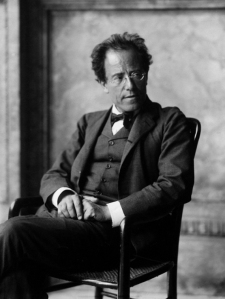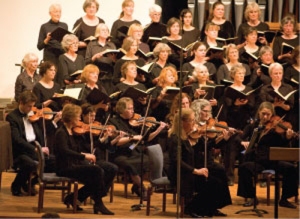Tags
Amsterdam, Anna van Hannover, Anne of Orange, Beethoven, Burchard Hummel, Carl Friedrich Abel, Carl Stamitz, Christian Ernst Graaf, concerto grosso, Corelli, Felix Meritis, Four Seasons, Francesco Zappa, Franz Xavier Richter, Frederick the Great, Friedrich Schwindl, George II, Handel, Haydn, Jan Ladislav Dussek, Johann Julius Hummel, Johann Nepomuk Hummel, Johannes Cuypers, Joseph Schmitt, Leopold Mozart, Limelight Magazine, Mannheim, Mozart, opera, Simon Murphy, Stradivarius, Sturm und Drang, symphony, Symphony in E flat Major "The Hurdy Gurdy", The Hague, Vivaldi, William IV, William V

Joseph Schmitt surrounded by his musical predecessors
With its hustle and bustle of international trade, its trend-setting music publishing industry and its active court and public music life, cosmopolitan eighteenth-century the Netherlands was an effervescent international hub of exciting musical creation and export.
In the middle of the century, composers in the Netherlands maintained close ties with their European colleagues, particularly those working at the highly influential and glittering court at Mannheim, Germany – the birthplace of the symphony and symphony orchestra. Leopold Mozart stated that the radiance of Mannheim “illuminated the whole of Europe.” Equally inspired by the Mannheimers’ visionary symphonic excellence, composers in the Netherlands developed their own charged-up and distinctive symphonic tradition.
The two largest centers of musical practice and endeavor in the Netherlands were the trading city of Amsterdam and the court city of The Hague. Both cities were highly cosmopolitan and internationally orientated by nature.
During the mid-eighteenth century, Dutch Stadholder William IV and his wife Anna van Hannover (also referred to in English as Anne of Orange), daughter of King George II of England, and a favorite student of Handel, took up permanent residence in the city of The Hague. The reigns of William IV and particularly of his son William V (covering the period 1747 to 1795) saw the musical life of the court city flourish. The wife of William V, Princess Wilhelmina of Prussia, was the niece of Frederick the Great and was, appropriately, also actively interested in music and music-making.
In the second half of the eighteenth century, The Hague was a city of forty thousand inhabitants. It featured four opera houses, a court orchestra with regular concert series and international soloists, various formal and informal court chamber music series and events, several other public concert series and musical initiatives, pleasure gardens (with music, opera, theatre, fireworks and other entertainments), the first Dutch open-to-the-public art gallery (instigated by William V), international music publishers and leading instrument makers including Cuypers a.k.a. the “Dutch Stradivarius.”
Alongside witnessing visits from international musical superstars including the Bach student and Mozart mentor, Carl Friedrich Abel, Johann Christian Bach (“The London Bach”), Mannheim symphonist Franz Xavier Richter as well as Wolfgang Amadeus Mozart, Ludwig van Beethoven, Jan Ladislav Dussek and Johann Nepomuk Hummel, The Hague had many heavyweight composer/performers in residence at the court. The composers included the hofkapelmeester Christian Ernst Graaf (1723–1804), the hofkapelconcertmeester Friedrich Schwindl (1737–1786), violin/viola virtuoso Carl Stamitz (1746–1801) and court cellist Francesco Zappa (1717–1803). These were composers who were all widely published and revered.
In Amsterdam, the central musical figure was Joseph Schmitt (1734–1791), also known as “The Dutch Haydn.” Schmitt was an internationally recognized composer as well as being a conductor, theorist, publisher and pedagogue, and belonged to the eighteenth-century jet set of symphonic composers, a circle which included the Bach sons and Abel. Schmitt was also the founding music director of the Netherlands’ first purpose built concert hall, the Felix Meritis, which opened its doors in 1788.
As a composer, Schmitt’s works display a highly individual voice. His musical language combines the eloquence of his teacher Abel, the drive of the Mannheimers and the Sturm und Drang of the older Bach sons. All this can be heard in his particularly rousing Symphony in E flat Major “The Hurdy Gurdy.“
As a publisher, Schmitt was responsible for introducing northern Europe, particularly Scandinavia, to the symphonic works of, among others, Mozart and Haydn for the very first time. From the offices of his publishing house in the Warmoesstraat in Amsterdam, Schmitt had a massive impact on the development of eighteenth-century musical taste and knowledge internationally. He also had a huge effect on the formation of the western musical canon and, in this way, continued in the tradition established by the earlier Dutch music publishers including Roger & Le Cène who were responsible for first introducing the world to such musical classics as Vivaldi’s Four Seasons and Corelli’s Concerti Grossi.
The most influential and far reaching Dutch music publishing house, however, was the firm of the Hummel Brothers started in The Hague in the 1750s. The company quickly expanded, adding offices in Amsterdam and Berlin. The Hummels produced particularly beautifully engraved editions and developed excellent international distribution. As a result, the works of the composers represented in their catalogue became Europe’s musical staple. The music published by the Hummels dominated the concert programs of court and public/private orchestras in mainland Europe, the British Isles, Scandinavia and America. The Hummels’ catalogue appealed to the voracious international audience of the time. The vocal, chamber and symphonic works of Dutch-based composers including Graaf, Schwindl, Stamitz, Schmitt and Zappa were an important part of the Hummels’ list of available works.
While composers working in eighteenth-century the Netherlands were certainly highly influenced by the Mannheimers’ musical style with its incredibly energizing, generating, enlightened, positive future vision, what is defining about the style of the Dutch symphonic school was its own open, international perspective and engagement – its cosmopolitanism. Reflecting the country’s unique political system, trading history and tradition of cultural exchange as well as the strong Dutch sense of independent individualism, the Netherlands’ eighteenth-century musical culture possessed the confidence to both reflect on and absorb from the world. From this it was able to distil and form its own musical blend, creating a wonderful, cosmopolitan musical language. And it is this cosmopolitanism which is the defining and highly appealing stylistic characteristic of the Dutch eighteenth-century symphony.
Simon Murphy – Limelight Magazine


 Much the same resourcefulness and quickness of mind that characterize the Italian period-instrument ensemble Europa Galante’s performances of Baroque music evidently carry over into the way violinist Fabio Biondi’s vibrant group conducts its business affairs.
Much the same resourcefulness and quickness of mind that characterize the Italian period-instrument ensemble Europa Galante’s performances of Baroque music evidently carry over into the way violinist Fabio Biondi’s vibrant group conducts its business affairs. Edward McCue (EM) Zachary, how are Rick Erickson and you interpreting this year’s Boulder Bach Festival theme, “Bach, the Passionate?”
Edward McCue (EM) Zachary, how are Rick Erickson and you interpreting this year’s Boulder Bach Festival theme, “Bach, the Passionate?”
 Edward McCue (EM) Now that we’re starting a new season, how do you feel about last year’s season and its theme, “Brandenburg and More?”
Edward McCue (EM) Now that we’re starting a new season, how do you feel about last year’s season and its theme, “Brandenburg and More?”

 Fortunately, Rick Erickson and I agree on so many things. For example, we agree on the inherent vocal nature of bowed instruments and wind instruments, and we want to find what is most natural. We don’t want to limit ourselves with our concepts of what may have been done in a particular choir or orchestra in a particular city in the year 1715, but rather, the more we read, the more ideas we have, the more we compose, the more we improvise, the more we explore, the more we try things on different instruments, the more we can bring to our audiences.
Fortunately, Rick Erickson and I agree on so many things. For example, we agree on the inherent vocal nature of bowed instruments and wind instruments, and we want to find what is most natural. We don’t want to limit ourselves with our concepts of what may have been done in a particular choir or orchestra in a particular city in the year 1715, but rather, the more we read, the more ideas we have, the more we compose, the more we improvise, the more we explore, the more we try things on different instruments, the more we can bring to our audiences.